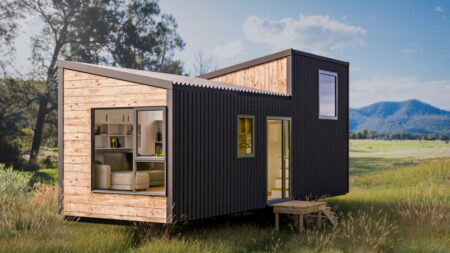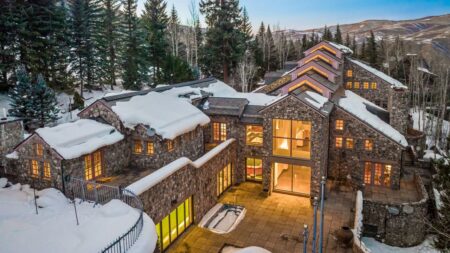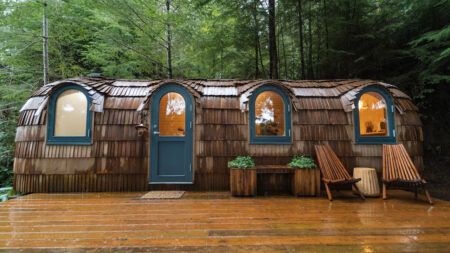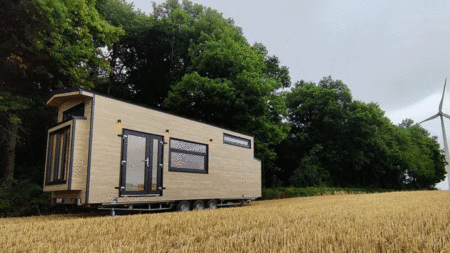After food and water, a home is the basic necessity for every human being. In recent years, people’s perception about how they live has shifted which has much to do with the homes they live in. Post-recession, America saw a rise in demand for downsized homes and it pushed the tiny house movement to blazing glory. Today, these micro-dwellings are giving new meaning to people’s lives worldwide. While tiny houses have many benefits, it doesn’t mean that traditional homes have lost their charm because people see them as a form of investment particularly with ever-increasing real estate prices.
So how do you choose the type of the house you want to live in? There can be many factors to that and you have to consider them carefully before buying an home for yourself. This article is a detailed analysis of tiny home vs traditional home so you know the pros and cons of both. It will help you make an informed decision by realizing what you need as a homebuyer.
Lifestyle Preferences
What homebuyers select reflects their lifestyle choices and it is the biggest factor that motivates them to buy a tiny house or a traditional home. Those who believe in the idea of minimalism are more likely to buy a tiny home with the idea of downsized living. These compact houses are ideal for individuals, couples, and small families. On the other hand, people who look for expansive living areas go for traditional homes which are suited for large families.
Thus lifestyle preferences can help determine if a tiny or traditional house is ideal. Although 56 percent of Americans find living in a compact home more appealing, the other half are inclined to conventional houses.
Cost Differences
Every home-buying decision is governed by the budget of a buyer, so cost is always a significant factor when choosing between housing types. Research shows that the average cost of a compact house is $67,000, making it 87 percent cheaper than the average conventional American home. A tiny house can cost 38 percent per square foot compared to full-sized residential properties.
Tiny homes tend to cost less upon initial purchase than traditional houses. Their price makes them attractive to first-time homebuyers or those who want to downsize. For example, some buyers can pay $55,000 upfront for a tiny home, helping them avoid a mortgage. You can save even more money by purchasing a pre-owned tiny home.
Mobility Versus Permanence
Tiny House on Wheels (THOW) and Park Model (PMRV) are two types of micro-dwellings. You can benefit with a THOW if you wish to travel with your home in tow, while PMRV will allow you to uproot and move to a new place, with of course special permits. Mobile homes let you enjoy the freedom and comfort of home while traveling unlike traditional homes though tiny homes can also be built on foundation.
Traditional houses are built on foundations on fixed locations and offer stability and permanence, which appeal to masses. On the other hand, those who prefer mobility and flexibility could lean towards tiny homes. Consider what you are after, whether it is a nomadic lifestyle or settling down in one place.
Maintenance and Utilities
Tiny homes cost less than traditional homes because they are smaller and have simpler systems. Lower utility bills also help reduce monthly expenses. Conversely, traditional homes while have higher utility bills and maintenance costs, they offer more space and amenities. Since the cost of building a small home is less you can focus on the quality of materials for its construction. In case of a conventional home, you need more quantity of construction materials which might sometimes force you to compromise on quality.
Maintenance plays a major role in your choice of home. Tiny homes generally have lower maintenance needs due to their small size and fewer systems. Traditional homes require regular maintenance because of their various systems and structures, including HVAC systems and roofing.
Space and comfort
Tiny homes require homeowners to be creative and efficient with their space use. This need could translate into minimalism and compromising on things, which may not be appealing to many. Living in tiny homes could be perfect for individuals or couples but challenging for families. However, taking care of smaller space is easier and one doesn’t have to sweat while keeping it clean. The comfort can be ensured by using good furniture for seating and sleeping.
Tiny homes offer space as per the needs of the homebuyer. It can range from a few hundred square feet to a maximum of 400 square feet and even a bit higher. Builders generally utilize the height of the microhomes to create additional living space. The average space offered by downsized houses is around 225 square feet which is much lesser than the general average area of traditional home which is estimated at 2300 square feet.
Long-term Financial Impact
Tiny homes are ideal if you want to save more on mortgage payments and utilities. They are often seen as a faster way to achieve financial independence. On the other hand, traditional homes significantly appreciate space more than tiny houses, which most would agree is a better long-term investment.
When choosing between the two options, tiny homes appear more manageable and cost-effective. Their smaller size means there is less surface area to work with and fewer materials required for construction. Their compact design also simplifies renovations or repairs, which means they can be done quickly, however, the choice of renovations is limited.
Traditional homes offer more flexibility for extensive renovations, as homeowners have more room to work with. Homeowners can add new rooms or update the current layouts. There’s great potential for personalization, but you should financially plan for these changes.
Environmental Impact
Tiny homes tend to leave a lower carbon footprint than traditional homes. Because they are smaller, they consume less energy and need fewer materials during construction, making them a sustainable housing option.
Traditional homes may have a more considerable environmental impact but can still be sustainable. By incorporating eco-friendly practices, such as energy-efficient appliances, using solar panels, passive design layouts, and rainwater harvesting systems, you can turn a traditional home into a sustainable one.
Consider your environmental values and how important sustainability is to your lifestyle. This information will help influence your choice of house. You can also keep in mind green building practices for both traditional and tiny homes.
Resale Value and Zoning Considerations
Since traditional homes are always in demand and real estate prices keep surging every year, they are known to have a more stable resale value. Tiny homes are characterized by variations in resale value as it depends upon the demand for such properties in a given location.
The tiny house is a niche market that is still evolving and has to adhere to zoning and regulatory considerations. Conventional homes stick to standard zoning requirements whereas micro-dwellings sometimes face challenges due to this. Certain regions might restrict the size and placement of tiny homes.
Financing Options
Understanding your financing options can help you decide between tiny and traditional homes. Here are some considerations:

Financing Traditional Homes
To purchase a traditional home, you should consider applying for mortgage loans. Most lenders offer options for traditional homeowners, including fixed-rate and adjustable-rate mortgages. You can repay traditional mortgages within 15-30 years. They have a low interest rate, making them appealing to most buyers.
Other options include government loans, hard money loans, and alternative financing. Determine whether you’re eligible for government loans, such as veterans or rural area residents. Hard money loans are shorter than traditional mortgages but have a higher interest rate. Lastly, alternative financing can refer to borrowing from retirement accounts or rent-to-own agreements.
Financing Tiny Homes
Financing options for tiny homes differ somewhat from traditional ones because of their unique nature. Although mortgage options for these homes are less, they are growing in availability. You can shop for mortgage rates to discover the best deals and terms. You can also apply for personal loans if you don’t qualify for a traditional mortgage.
You can use the equity to finance a tiny home if you’re a homeowner. Some online lenders specialize in loans for tiny houses. The financing options for tiny homes may not be as extensive as traditional houses, but they’re still available when you know where to look.
Budgeting and Financial Planning
Effective budgeting is essential when choosing between a tiny or traditional home. This strategy includes planning down payments, monthly payments, and unexpected expenses. You can make a detailed budget plan that considers all potential costs of homeownership. Online financial tools are available to help you with this process.
Frequently Asked Questions (FAQ)
Q: Should I DIY my tiny house?
A: As tiny houses are small in size, many people try attempting a DIY approach to build them which also helps in reducing the costs. But it must be kept in mind that such houses require great expertise and skill to create a better design and smart usage of space. There are many tiny house builders who offer basic models that can be customized to homebuyer’s needs and preferences. If you do not know a thing about construction, it is better not to waste time DIYing and get it done by skilled hands.
Q. How long does a tiny house last in comparison to a traditional home?
A: It all depends upon the quality of materials that you incorporate in building a house, be it a micro-dwelling or a conventional one. Time to time maintenance and repair works are needed in both types of residences. Mobile tiny houses stand more chances of wear and tear.
Q: What is an easy way to compare tiny home and traditional home as a first-time buyer?
A: Tiny house communities often foster close-knit relationships, while traditional houses have neighborhoods with diverse community interactions. Each one has a different impact on your social life according to their accessibility to schools, healthcare, and entertainment. Try visiting tiny home communities or traditional neighborhoods to understand what to expect. You can also get in touch with professional builders to know in detail about these homes.
Wrapping Up
If struggling with dilemma of tiny home vs traditional home and which one to choose, delve into the above-mentioned factors, from cost differences and lifestyle preferences to maintenance requirements and financing options. Your choice depends on your wants and needs and your financial situation. Assess your priorities and economic goals, and you’ll find the type of home that best aligns with your lifestyle.
If this article helped you to get a better perspective of tiny home vs traditional home then let us know in the comments and share it with someone you know should read this.
Follow Homecrux on Google News!




